21 Wild Animals in Gambia [Wildlife in Gambia]
Want to know more about the wildlife in Gambia?
Discover 21 wild animals in Gambia in this post, as well as interesting facts about them. 🇬🇲
Learn All About Gambian Animals
Ready to learn all about Gambian animals?
I’ve always been fascinated by animals, and by how they can be so different from one country to another. In this guide, we’ll focus on the many animals Gambia has on the land, in the sky, and underwater.
I’ve split the guide into 4 categories:
- Native animals from Gambia
- Endangered animals of Gambia
- What is the national animal of Gambia?
- How many animals native to Gambia?
Let’s dive in right away with our first category!
Native Animals from Gambia
Gambia is a small African country located in the far western part of the continent, next to the Atlantic Ocean. It is the smallest country in mainland Africa, and it used to be a British colony. It is surrounded by Senegal, and its capital and largest city is Banjul, which counts more than 73,000 inhabitants (but more than 413,000 if you include the metropolitan area!).
An interesting part of the country that I wanted to tackle is its wildlife. In light of that, I have listed the best of it, and I hope you will love learning what animals live in Gambia.
Here’s the Gambia animals list.
1. Leopard
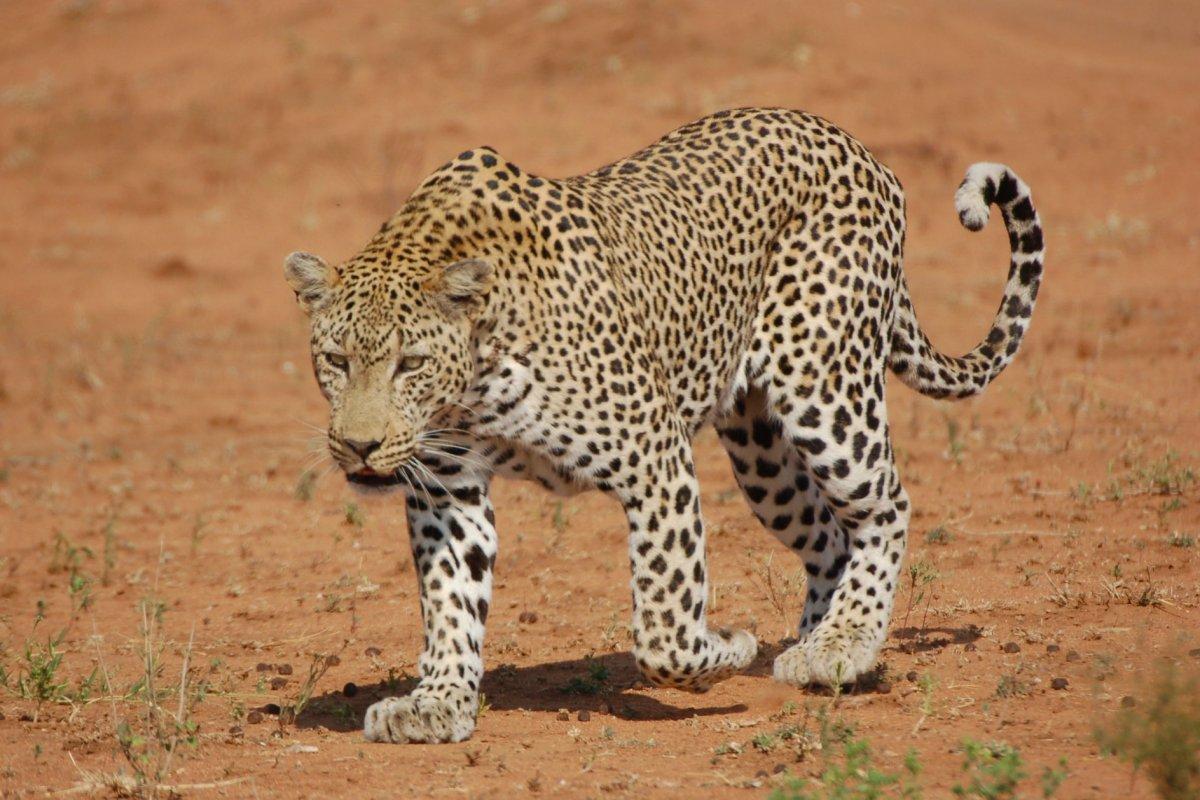
- Name: Leopard
- Scientific name: Panthera pardus
- Conservation status:
Although it is quite rare and thought to only cross the far eastern parts of the country, the leopard is present in the Gambia. It is a species of large wild cat with a very wide range in sub-Saharan Africa, but also in western and eastern Asia, Russia, and on the Indian subcontinent.
The leopard has quite a few unique features: it is an opportunistic hunter, it is highly adaptable and very strong, and can run at up to 58 km/h / 36 mph.
2. Aardvark
- Name: Aardvark
- Scientific name: Orycteropus afer
- Conservation status:
The aardvark is a peculiar creature for sure. It is a medium-sized mammal native to all of sub-Saharan Africa and is nocturnal and burrowing. What makes it so special is its long pig-like snout that cannot be found in most other insectivores.
Despite feeding on animals as small as ants and termites, it is stockily built and has very powerful legs and sharp claws that help it create burrows and dig its prey out of its hills.
3. Western tree hyrax
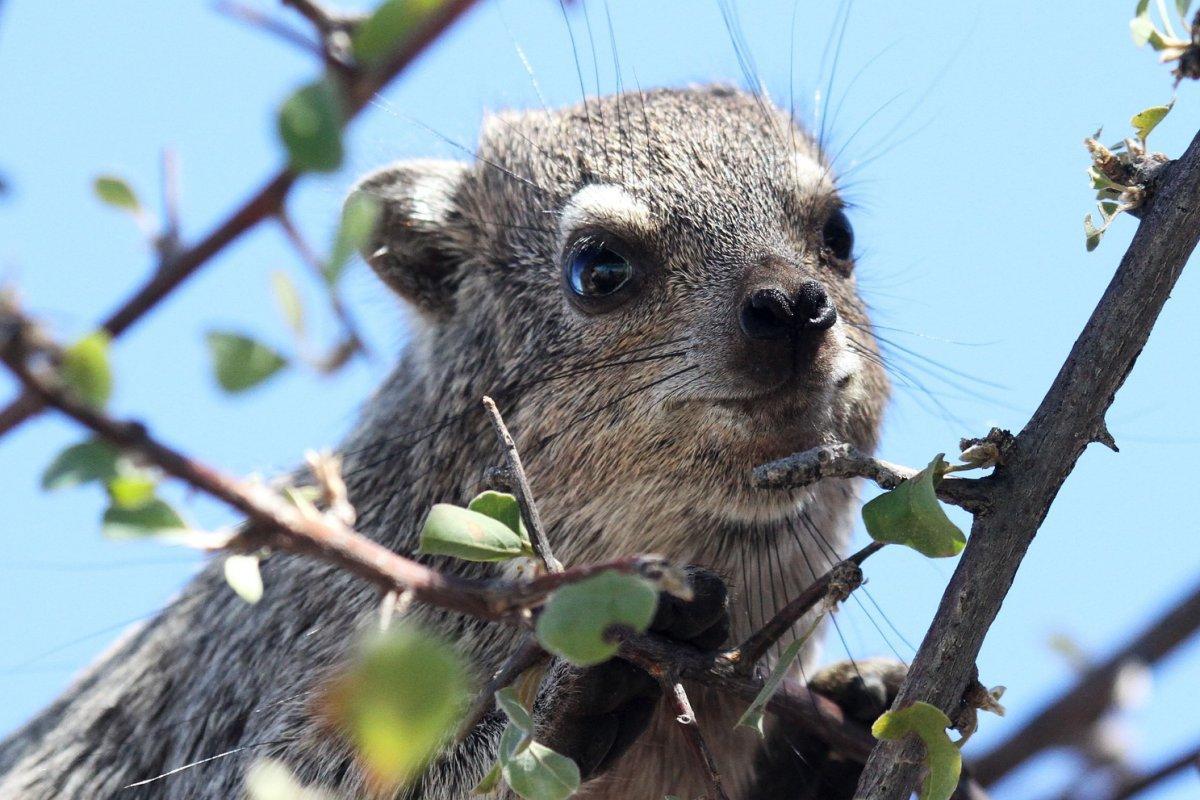
- Name: Western tree hyrax
- Scientific name: Dendrohyrax dorsalis
- Conservation status:
The western tree hyrax, also known as Beecroft’s tree hyrax or the western tree dassie, is a species of tree hyrax native to Central and West Africa. Unlike other hyraxes, it has short coarse fur and a white patch of fur beneath the chin.
This animal is rather solitary, and can rarely be found in groups of 2 or 3, but never more. Believe it or not, a chimpanzee was once seen capturing a western tree hyrax, carrying it to its nest, and sleeping with it!
4. African manatee
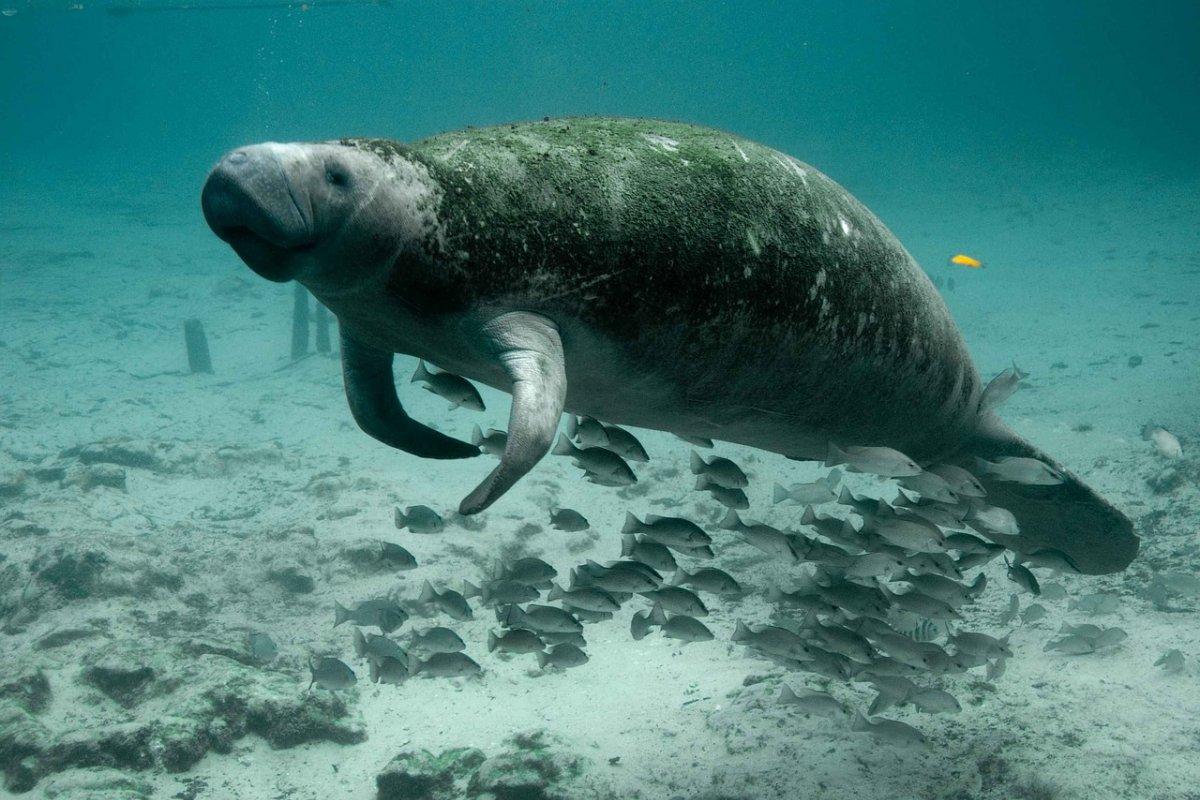
- Name: African manatee
- Scientific name: Trichechus senegalensis
- Conservation status:
The African manatee, also known as the West African manatee, is a species of manatee native to a large portion of the West African coastline as well as freshwater areas within the continent. Not very much is known about this species, but it was already observed as far as 75 km / 47 mi offshore, and it feeds on seagrass and likes coastal estuaries.
This animal is nocturnal and tends to travel silently. It lives in groups of 1 to 6 individuals and has very few natural predators.
5. African forest elephant
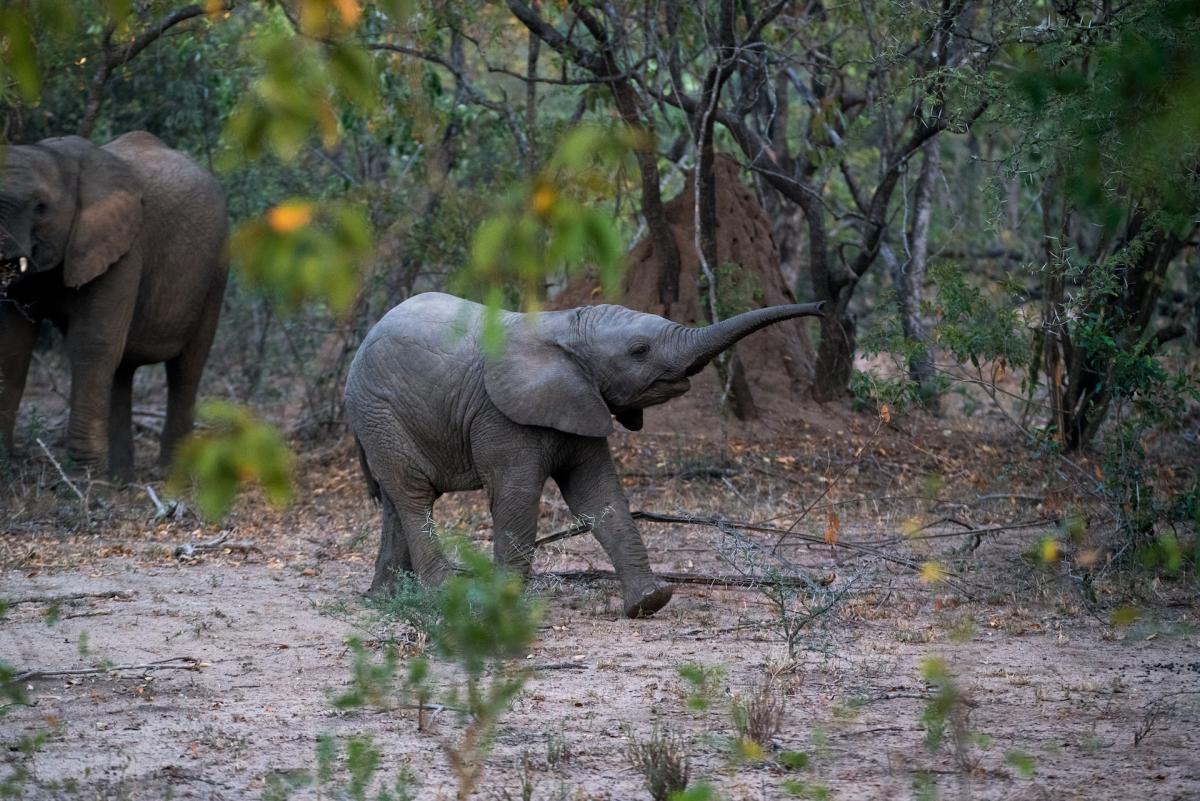
- Name: African forest elephant
- Scientific name: Loxodonta cyclotis
- Conservation status:
The elephant is for sure one of the most iconic animals from Africa. The African forest elephant is a subspecies of the elephant, and one of two living elephants on the continent.
It is known as the megagardener of the forest because it often forages on leaves, fruit, tree bark, and seeds, and greatly contributes to the structure and composition of several types of forests. Sadly, it is critically endangered because of habitat loss and poaching.
6. Senegal bushbaby
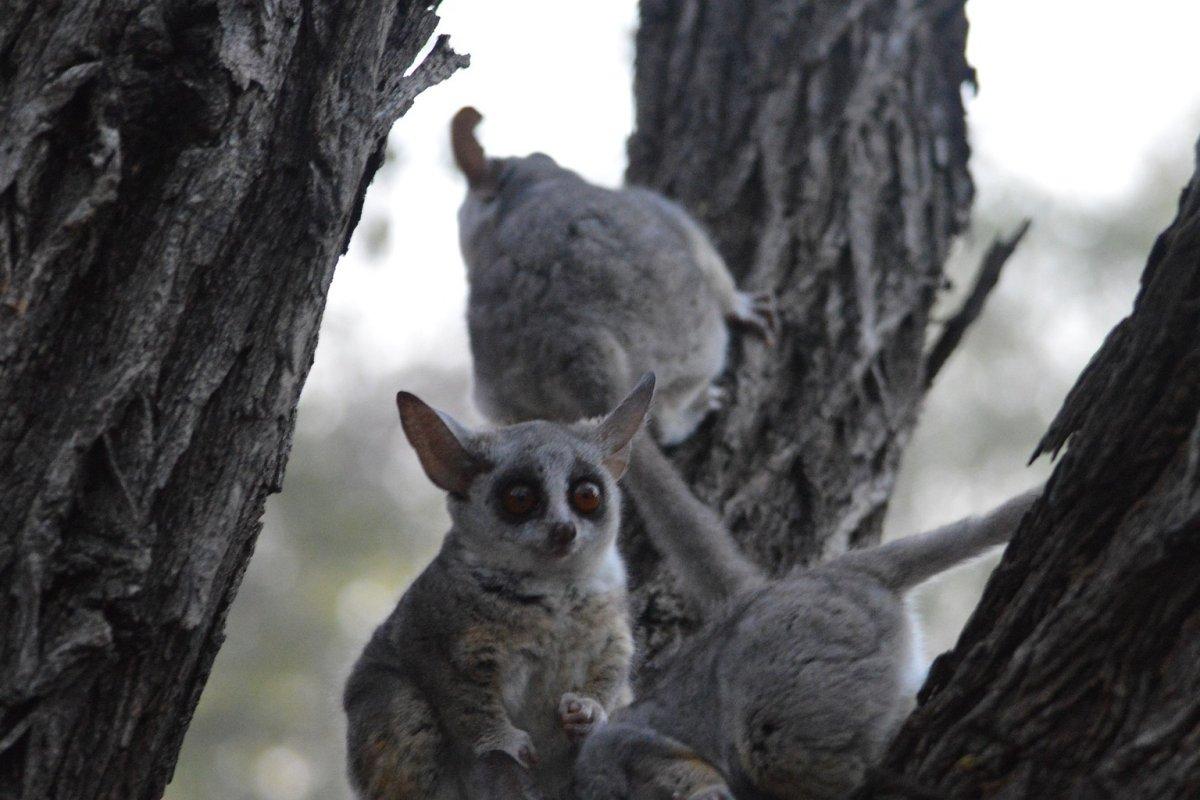
- Name: Senegal bushbaby
- Scientific name: Galago senegalensis
- Conservation status:
The Senegal bushbaby, also known as the lesser bush baby or the Senegal galago, is a species of small primate native to sub-Saharan Africa, in a strip from Senegal to Ethiopia.
It is a nocturnal animal that gets its name either from its cries or from its appearance. In any case, it is an agile leaper that runs swiftly in the trees. The reason for its large eyes is having good night vision, and its long tail is ideal for balance.
7. African savanna hare
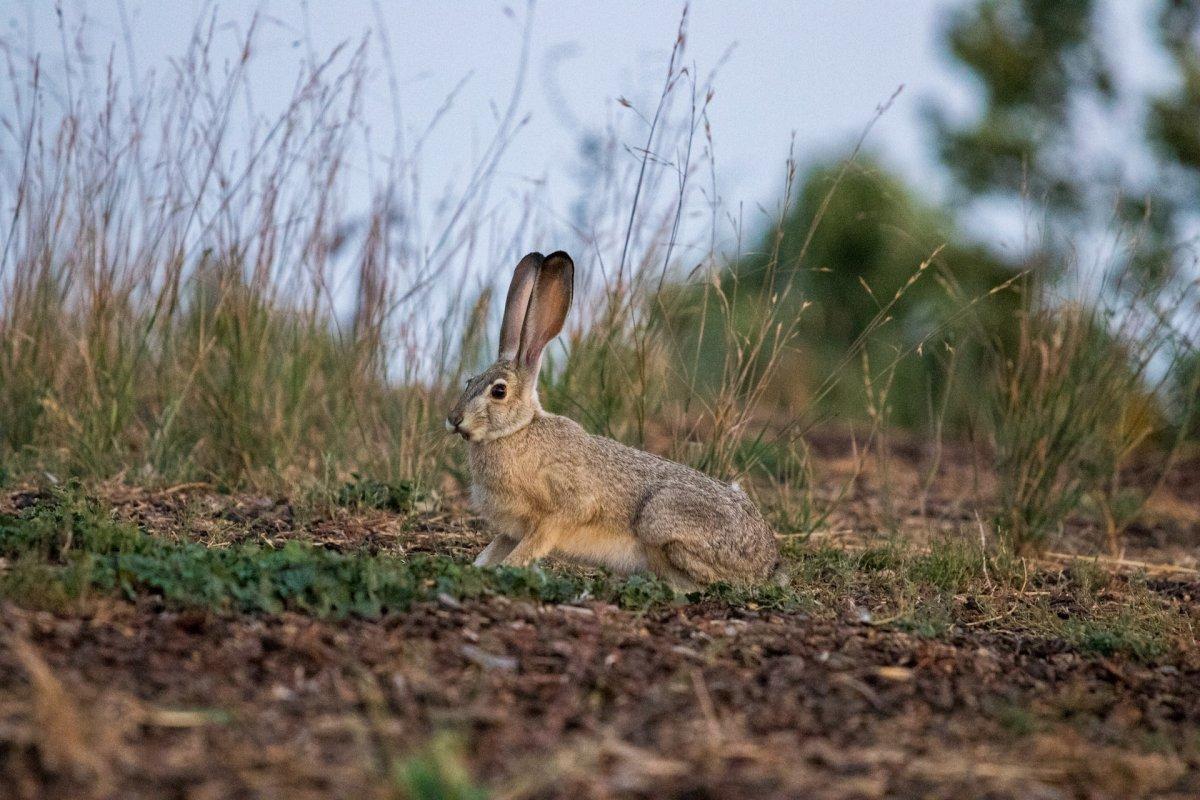
- Name: African savanna hare
- Scientific name: Lepus victoriae
- Conservation status:
Hares are probably not what you would expect to find in the savanna, but it is exactly where the African savanna hare lives. Outside of this, it can also be found in desert areas such as the Sahel, where it is a solitary, nocturnal animal.
In order to survive, it can rely on great camouflage, but most importantly on its great speed of up to 70 km/h / 43 mph.
8. Spotted hyena
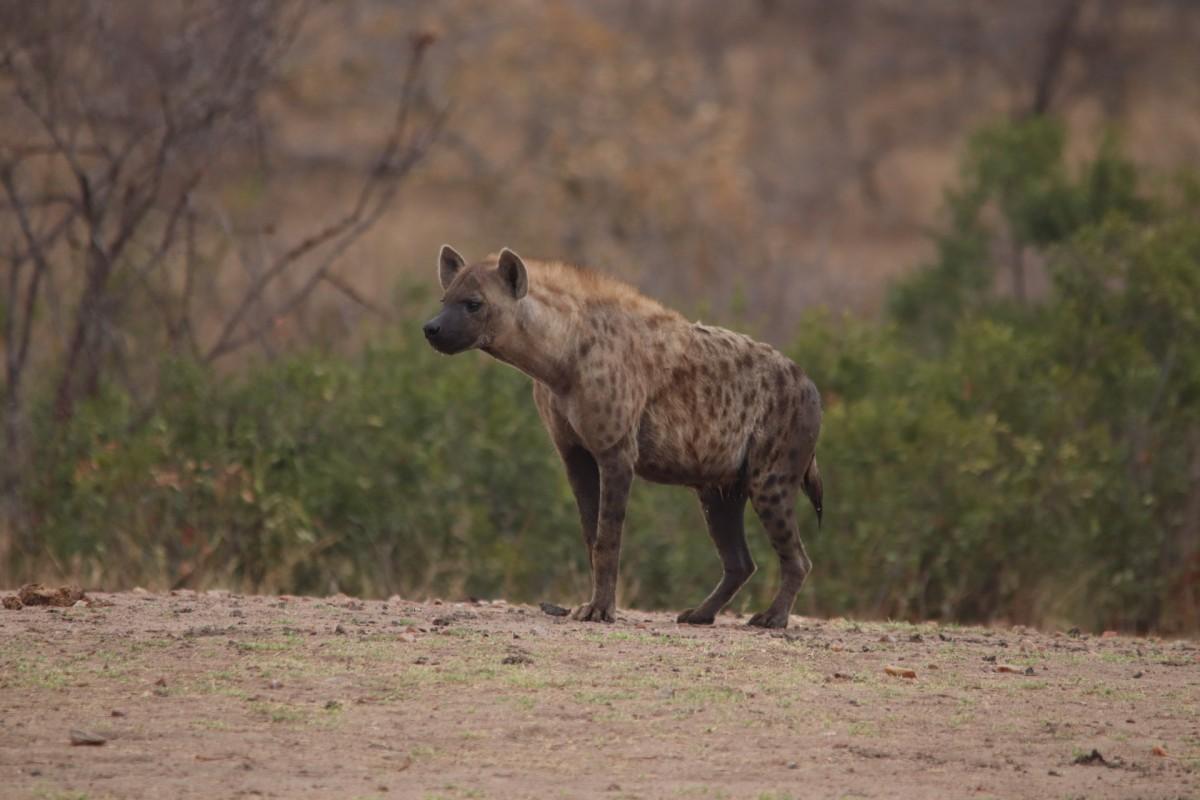
- Name: Spotted hyena
- Scientific name: Crocuta crocuta
- Conservation status:
The spotted hyena, also known as the laughing hyena, is a very important animal in Gambia, as it is the national symbol. Though it is rarer than it used to be, it can still be found in the savannas of the country.
This species is highly successful thanks to its opportunism, adaptability, and capacity to eat and digest almost anything. It has had a long history of interactions with humans, sometimes considered ugly, cowardly, and even stupid, some others being dreaded and even venerated.
9. Tree pangolin
- Name: Tree pangolin
- Scientific name: Phataginus tricuspis
- Conservation status:
The tree pangolin, also known as the white-bellied pangolin or the three-cusped pangolin, is a species of pangolin, and the most common African forest pangolin. As a group, pangolins are some of the most endangered animals on the planet, and this species is threatened by hunting for traditional medicine and the bushmeat trade.
This pangolin feeds on insects such as ants and termites and catches them with its sticky tongue before bringing them into its mouth.
10. Gambian sun squirrel
- Name: Gambian sun squirrel
- Scientific name: Heliosciurus gambianus
- Conservation status:
The Gambian sun squirrel is a species of rodent native to many sub-Saharan African countries. It was first discovered in 1835 by William Ogilby, and it is a fairly small animal (up to 240 mm / 9.4 in).
The pelage of this squirrel is usually grayish, with a paler ring around the eyes. It lives in tropical Africa, from Senegal and Gambia to Ethiopia and Kenya, usually in wooded savannas and grasslands.
11. Atlantic humpback dolphin
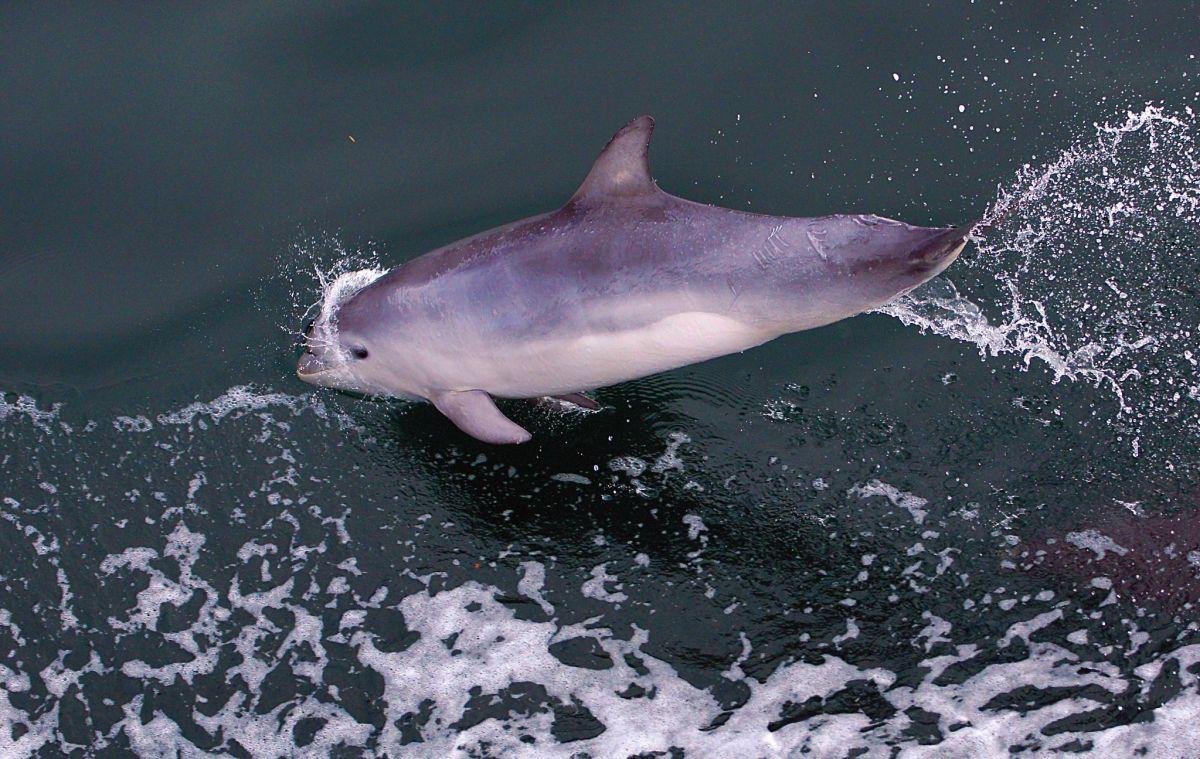
- Name: Atlantic humpback dolphin
- Scientific name: Sousa teuszii
- Conservation status:
The Atlantic humpback dolphin is a species of dolphin native to the coastal areas of western Africa. Though it is known to be shy and does not do any aerial displays, it is listed as critically endangered, mostly due to pollution, habitat loss, overfishing, and climate change.
This dolphin lives in groups of usually 1 to 8 individuals, but gatherings of up to 40 members have already been observed. They forage together close to shore in shallow waters and feed on coastal fish and crustaceans.
12. Caracal
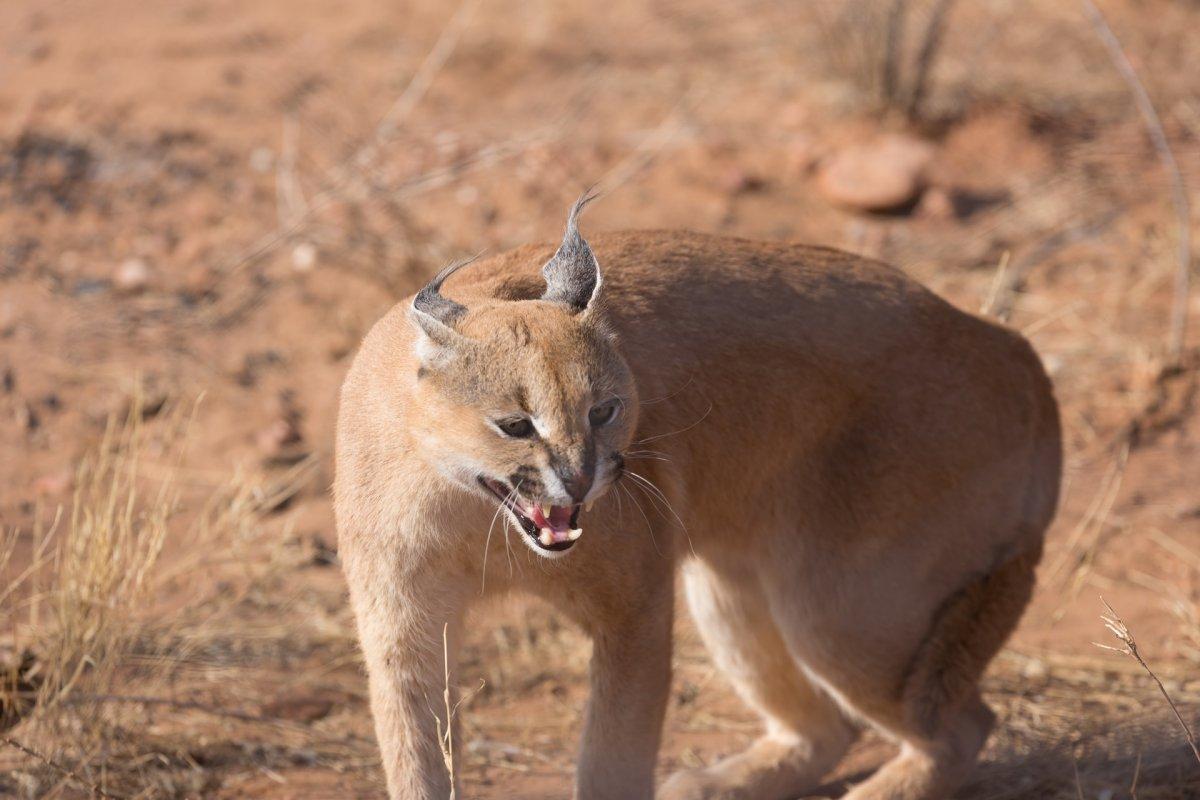
- Name: Caracal
- Scientific name: Caracal caracal
- Conservation status:
The caracal is a medium-sized species of wild cat native to Africa, Central Asia, Pakistan and India, and the Middle East. It has long legs with long canine teeth and a uniform reddish-tan coat.
This nocturnal animal is highly elusive and very difficult to observe. It either lives together or in pairs and feeds on birds, rodents, and small mammals. Believe it or not, it was even tamed and used for courses in countries such as Egypt and Persia.
13. Gambian mongoose
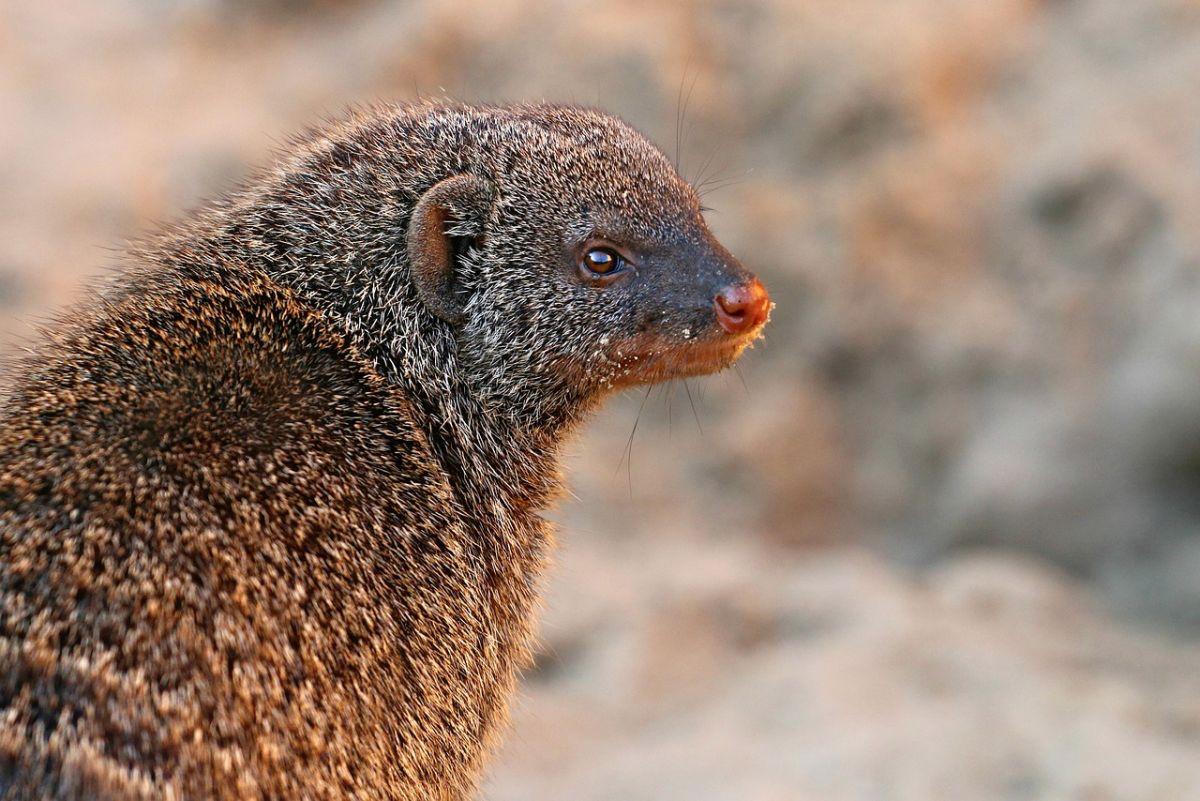
- Name: Gambian mongoose
- Scientific name: Mungos gambianus
- Conservation status:
The Gambian mongoose is a species of mongoose native to the Guinean area, from Gambia to Nigeria. It has grizzled gray and brown fur, and it is endemic to West Africa, where it lives in woodlands and savannas.
This mongoose lives in groups of about 10 to 20 individuals, but some may reach more than 40 members. It is a highly territorial animal that will not hesitate to fight with its neighbors; if you are lucky enough, you might hear it, as it has a very loud call!
14. African wild dog
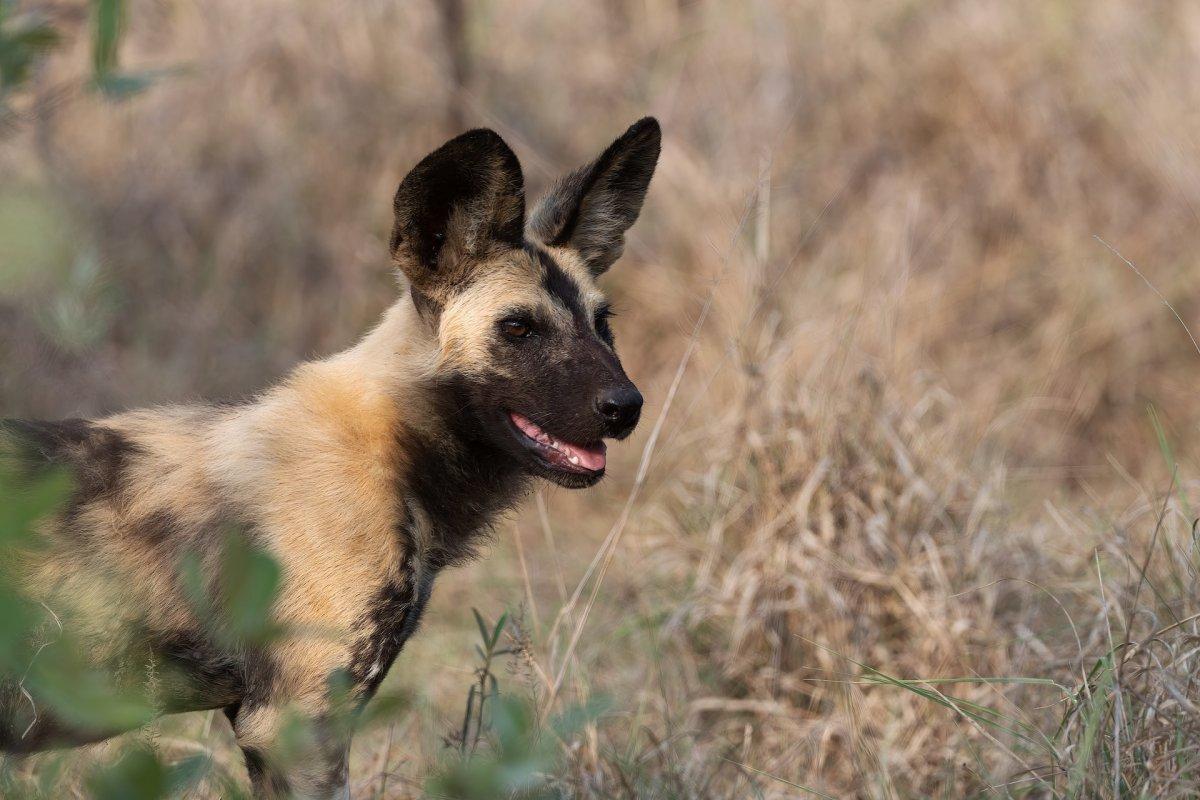
- Name: African wild dog
- Scientific name: Lycaon pictus
- Conservation status:
The African wild dog, also known as the African painted dog or the African hunting dog, is a species of wild canine native to sub-Saharan Africa. It is the largest wild canine on the continent, and it has a hypercarnivorous diet.
Sadly, this wild dog is considered endangered, as only about 6,600 adults remain, scattered across 39 populations, all threatened by persecution, diseases, and habitat fragmentation. The specialty of the African wild dog is hunting antelopes by day, and it chases them to exhaustion.
15. African clawless otter
- Name: African clawless otter
- Scientific name: Aonyx capensis
- Conservation status:
The African clawless otter, also known as the Cape clawless otter or the groot otter, is a species of otter native to most of sub-Saharan Africa, and the second-largest otter species in the world. It inhabits lowland forest and savanna areas, and has partially webbed and clawless feet, as its name suggests.
This otter is mostly solitary, but it will live next to up to 5 neighbors, each of them having its own territory.
16. Side-striped jackal
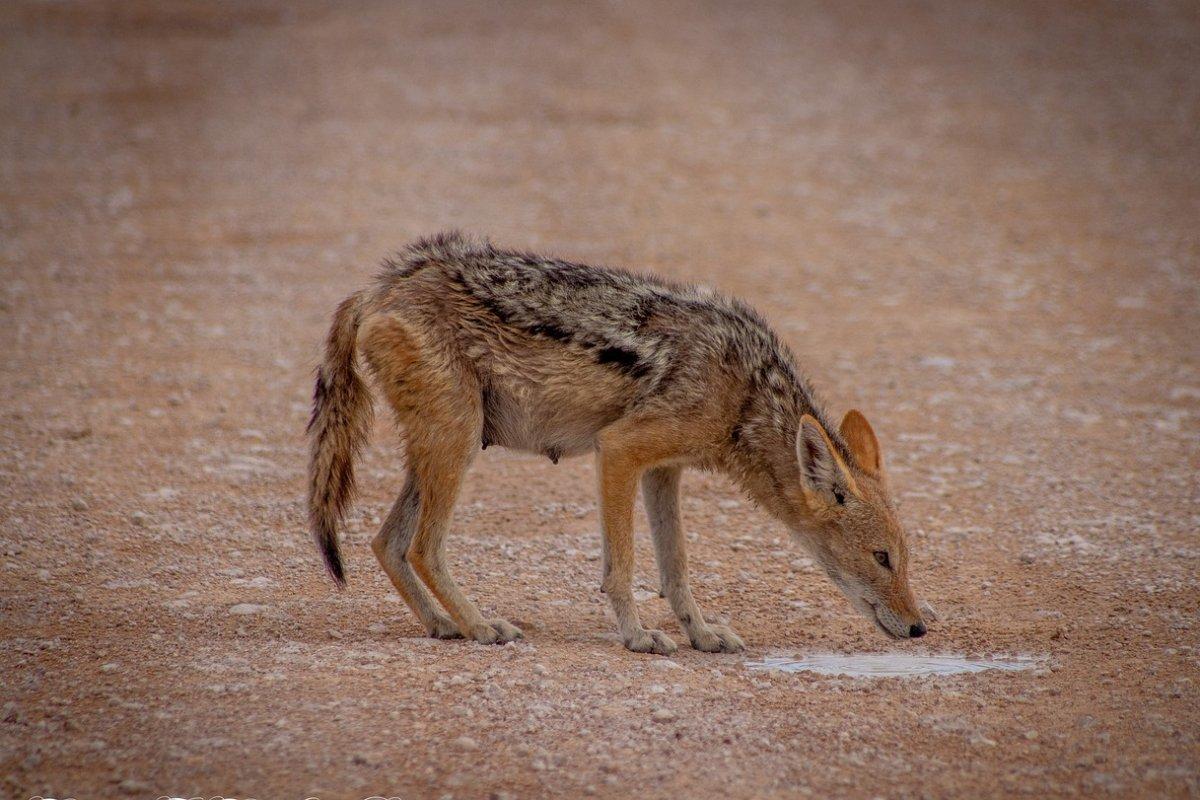
- Name: Side-striped jackal
- Scientific name: Lupulella adusta
- Conservation status:
The side-striped jackal is a species of canine native to Central and South Africa.
It lives in woodlands and scrub areas and it is less carnivorous than other jackal species: instead, it is a highly adaptable omnivore that will feed on whatever it can depending on the area and the season. For instance, in rural areas, the side-striped jackal can feed on up to 30 percent of fruits, while in the wild it greatly varies.
17. Guinea baboon
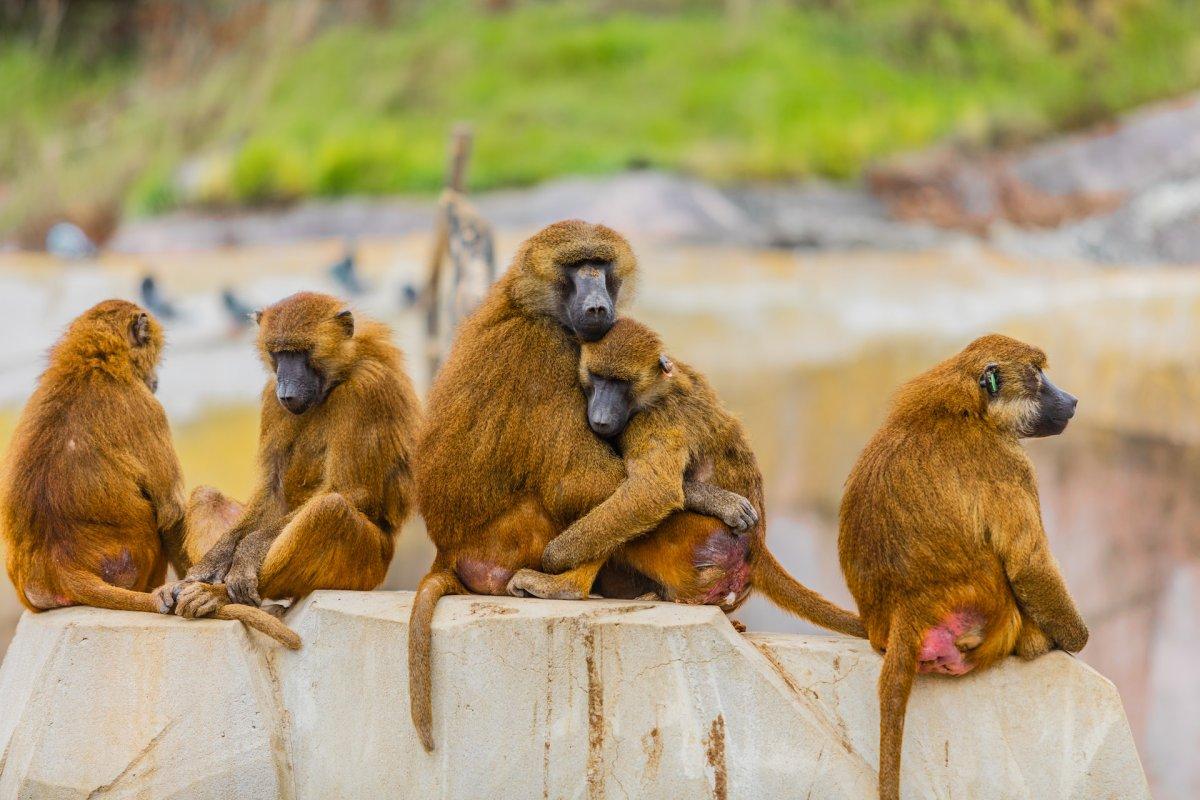
- Name: Guinea baboon
- Scientific name: Papio papio
- Conservation status:
The Guinea baboon, also known as the savanna baboon, is a species of Old World monkey native to a small area in western Africa that includes Gambia, Guinea, Senegal, Mauritania, and Mali.
It is a terrestrial and diurnal animal that sleeps in high rocks or trees at night, away from predators, which are mainly large canines and felids. This baboon is highly opportunistic and an omnivore that feeds on anything from fruits and bark to birds, small mammals, and worms.
18. Palm-nut vulture
- Name: Palm-nut vulture
- Scientific name: Gypohierax angolensis
- Conservation status:
The palm-nut vulture, also known as the vulturine fish eagle, is a large species of bird of prey native to sub-Saharan Africa. It breeds near water, with a range similar to that of palms, hence its name.
This vulture is quite approachable, and can actually be seen pretty easily, near habitation and even on large hotel lawns in the tourist areas, especially in Gambia. There are about 80,000 pairs of palm-nut vultures in all of Africa and they live in coastal areas.
19. Spotted bush snake
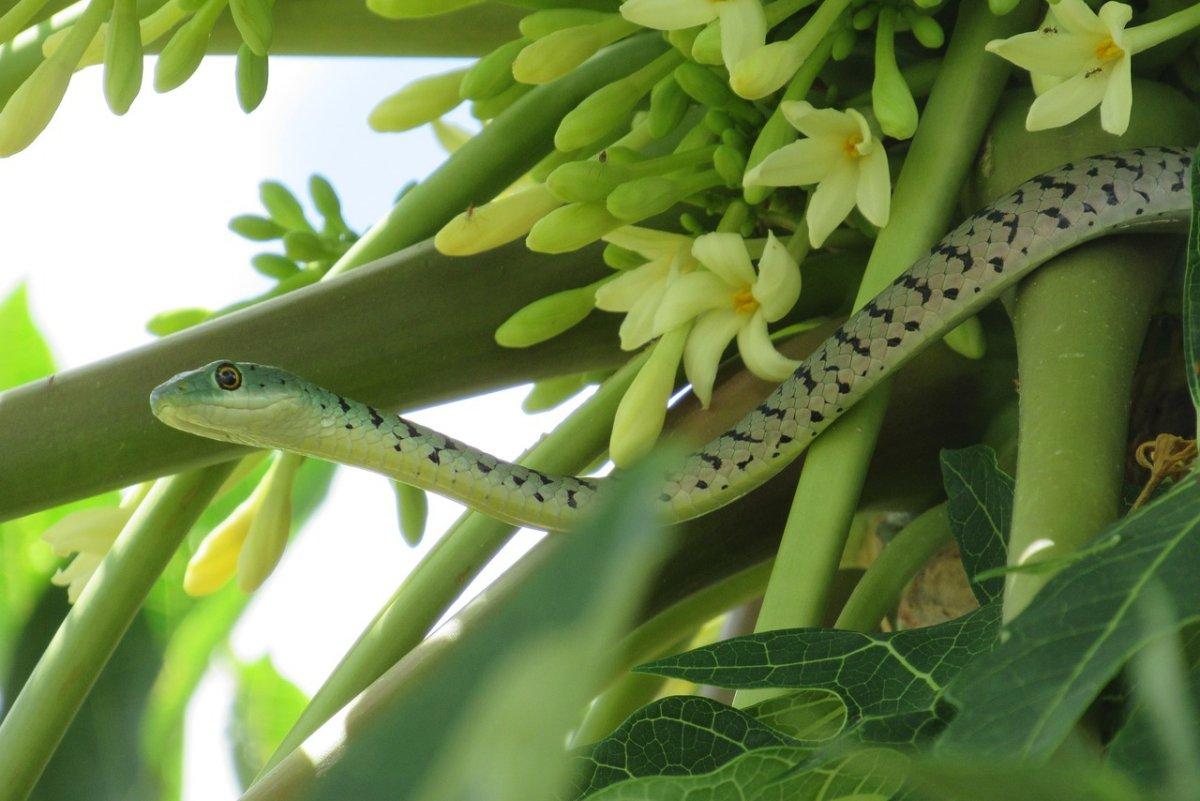
- Name: Spotted bush snake
- Scientific name: Philothamnus semivariegatus
- Conservation status:
The spotted bush snake is a species of non-venomous snake endemic to Africa. It has a bright green color, and hatchlings are even brighter than mature individuals.
This snake can be found in trees in forest and bush areas, where it mostly hunts for tree frogs and lizards. It is an adept climber and swimmer, highly alert and with fantastic eyesight. Besides, it will not hesitate to roam long distances in order to find food.
20. African sacred ibis
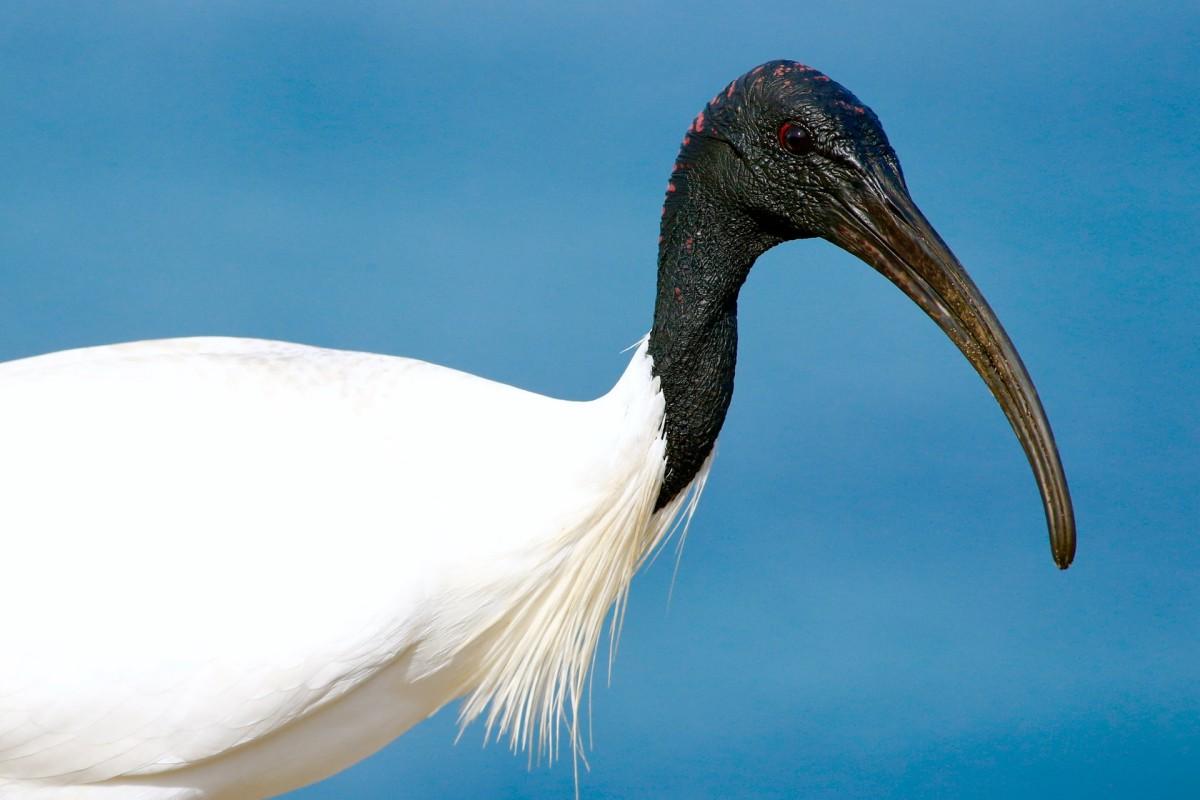
- Name: African sacred ibis
- Scientific name: Threskiornis aethiopicus
- Conservation status:
The African sacred ibis is a species of ibis native to much of sub-Saharan Africa and the Middle East. It is well-known for its role in Ancient Egypt religion, where it was linked to the god Toth. However, it is now extirpated from Egypt.
This bird species inhabits mud flats and marshy wetlands, nesting near water or trees. It feeds in shallow water, looking for insects, crustaceans, mollusks, and worms.
21. Nile monitor
- Name: Nile monitor
- Scientific name: Varanus niloticus
- Conservation status:
The Nile monitor, also known as the African small-grain lizard, the guana, the water leguaan, or the river leguaan, is a large species of monitor native to sub-Saharan Africa and the Nile banks.
Despite being highly aggressive and resisting taming, it can sometimes be found in the pet trade. It requires a large cage and can inflict very serious wounds by scratching and biting. In the wild, it is sometimes considered an invasive species.
—
So there you have it, this was my list of animals in Gambia. I hope you enjoyed this list and that you learned something new today.
In case you want to learn more about the Gambia wildlife, feel free to keep reading, as I still have lots of things to tell you about:
Endangered Animals of Gambia
This is definitely the saddest part of the list, but it is essential to raise awareness. Because of this, let’s go through the list of endangered animals in Gambia.
Here are the animals in danger of extinction in Gambia.
- None
- Slender-snouted crocodile
- Largetooth sawfish
- Hooded vulture
- African forest elephant
- Whitespotted guitarfish
- and 20 more…
- Lappet-faced vulture
- Basking shark
- Mediterranean monk seal
- Egyptian vulture
- Western red colobus
- and 30 more…
To see the full list of endangered species in Gambia, head over to the International Union for Conservation of Nature’s Red List.
What is the National Animal of Gambia?
The national animal of Gambia is the spotted hyena.
Largely known as the laughing hyena, this highly successful animal is the most common large carnivore in Africa, and it has a complex social behavior and group size. It is opportunistic and adaptable, and contrary to popular belief, it only rarely scavenges, as it is primarily a hunter.
Don’t be fooled by its contagious laugh, it is actually a dreadful animal that readily feeds on human corpses and even attacks humans!
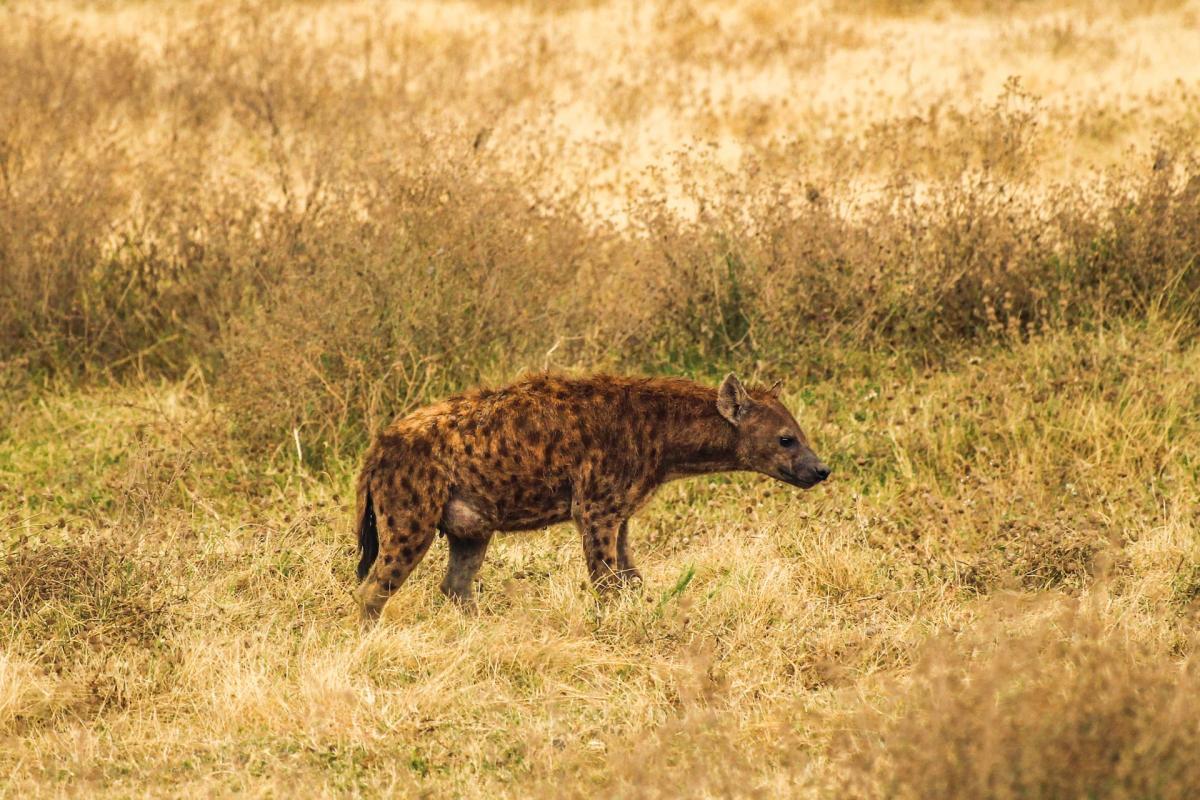
How Many Animals Native to Gambia?
What is the diversity of native animals in the Gambia?
Let’s look at the total number of species of Chordata (mammals, birds, fishes, and reptiles).
Total number of animal species in Gambia: 1,802 (14,205 in total in sub-Saharan Africa)
More About Animals in the World!
Loved these Gambia animal facts? Want to see what animals live in other countries?
Then check out these posts:
Or click here to see ALL the facts up on the blog! Spoiler alert: there’s A LOT of them.
Share the knowledge! Click on the buttons below to share information about these famous animals in Gambia with your friends, and help them learn more about the world 🙂
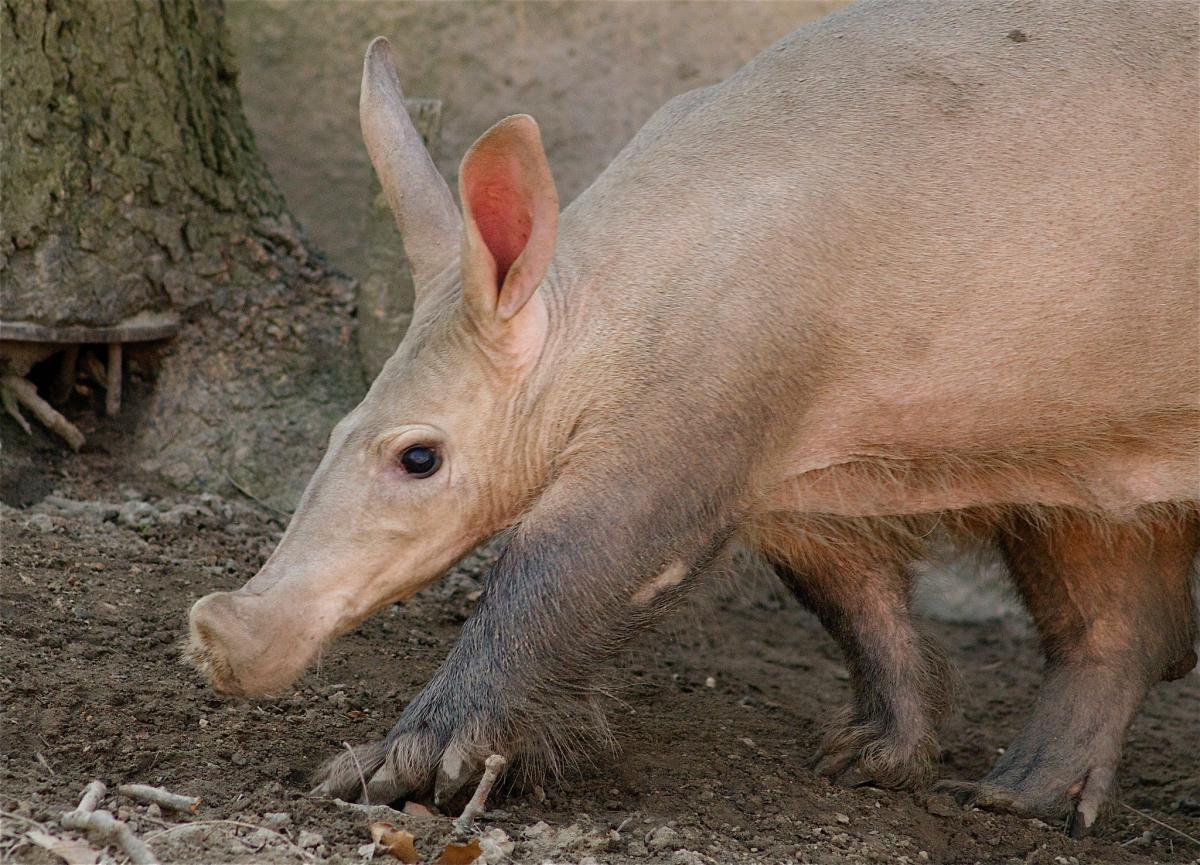
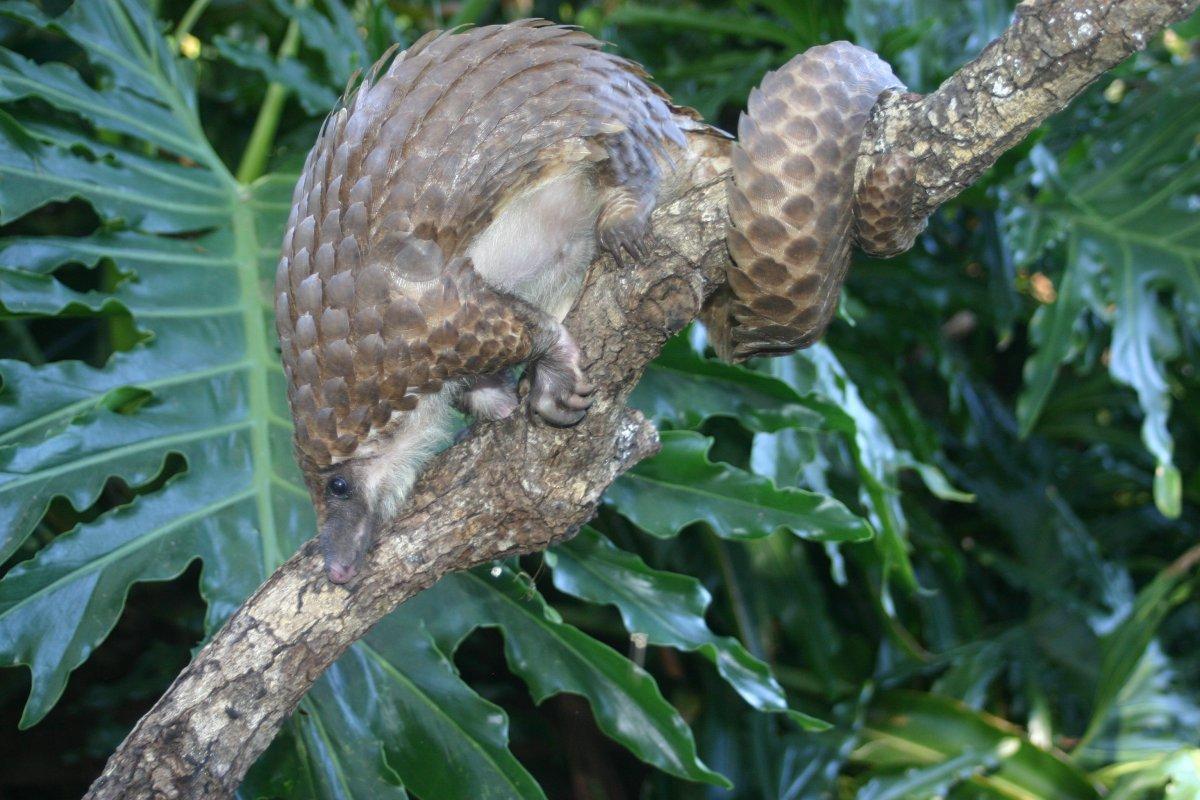
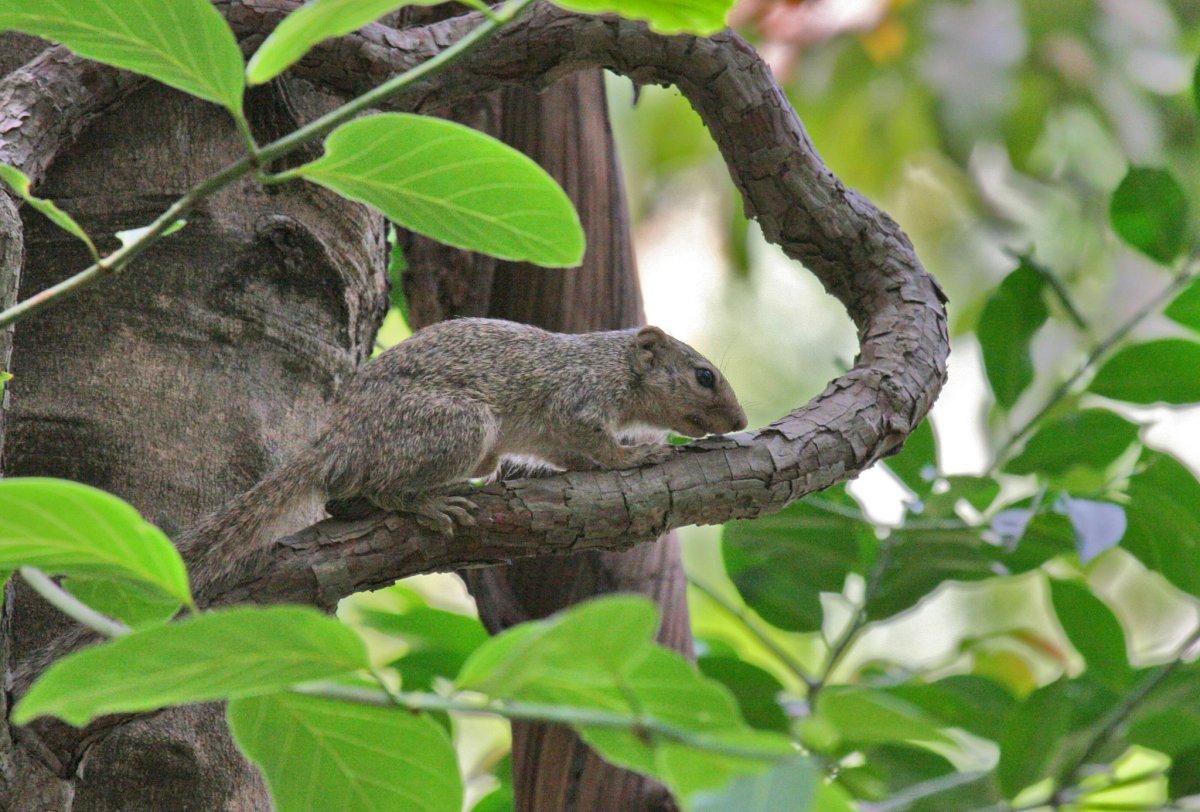
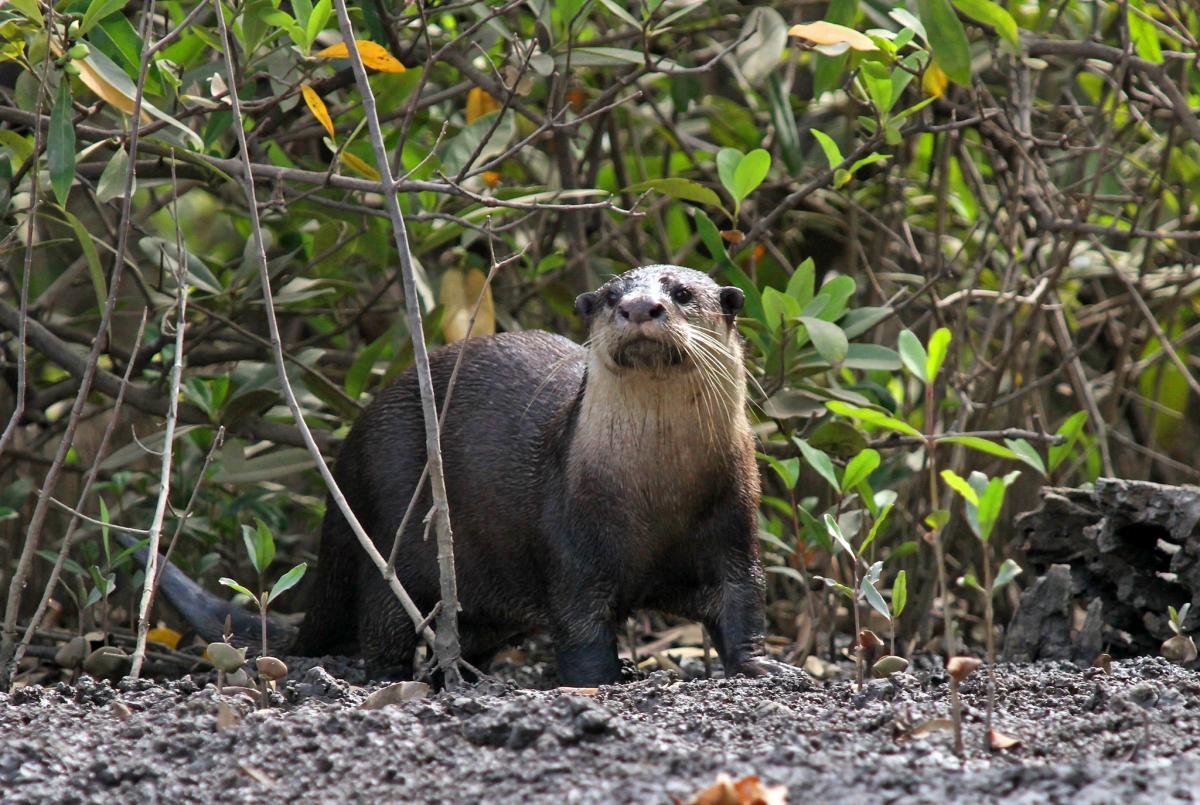
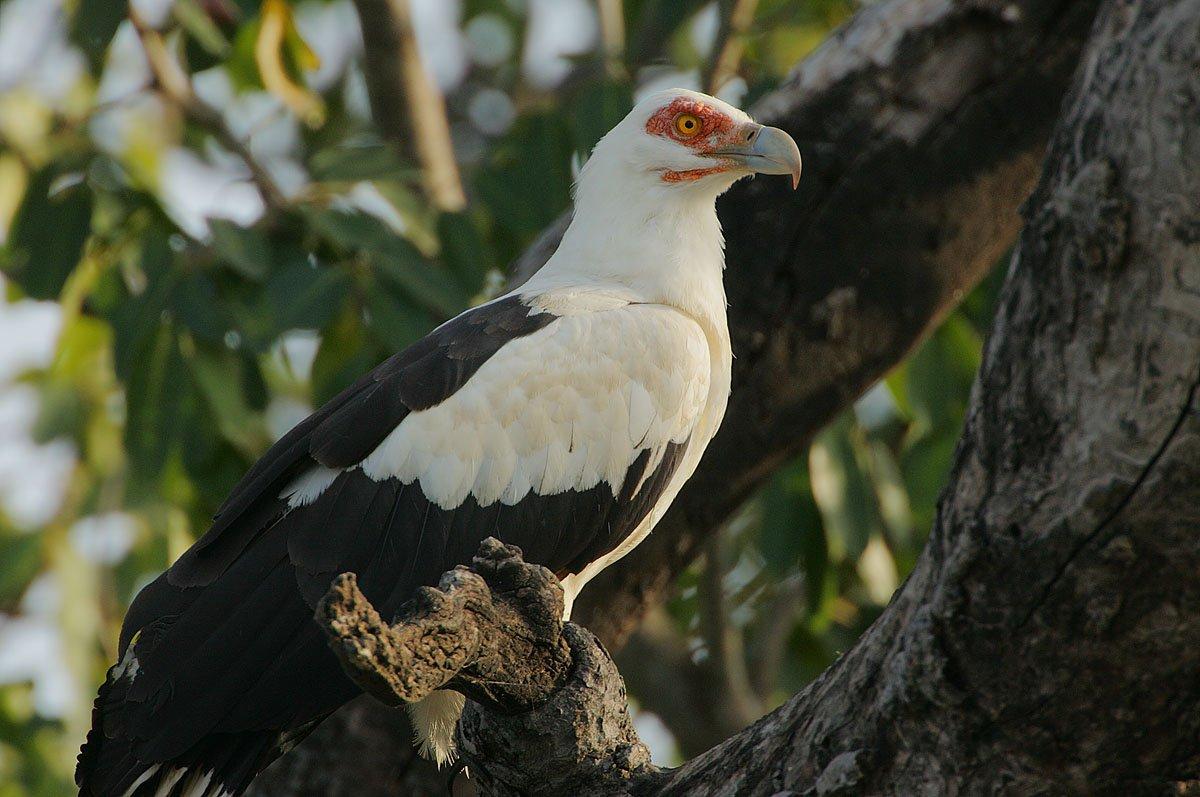
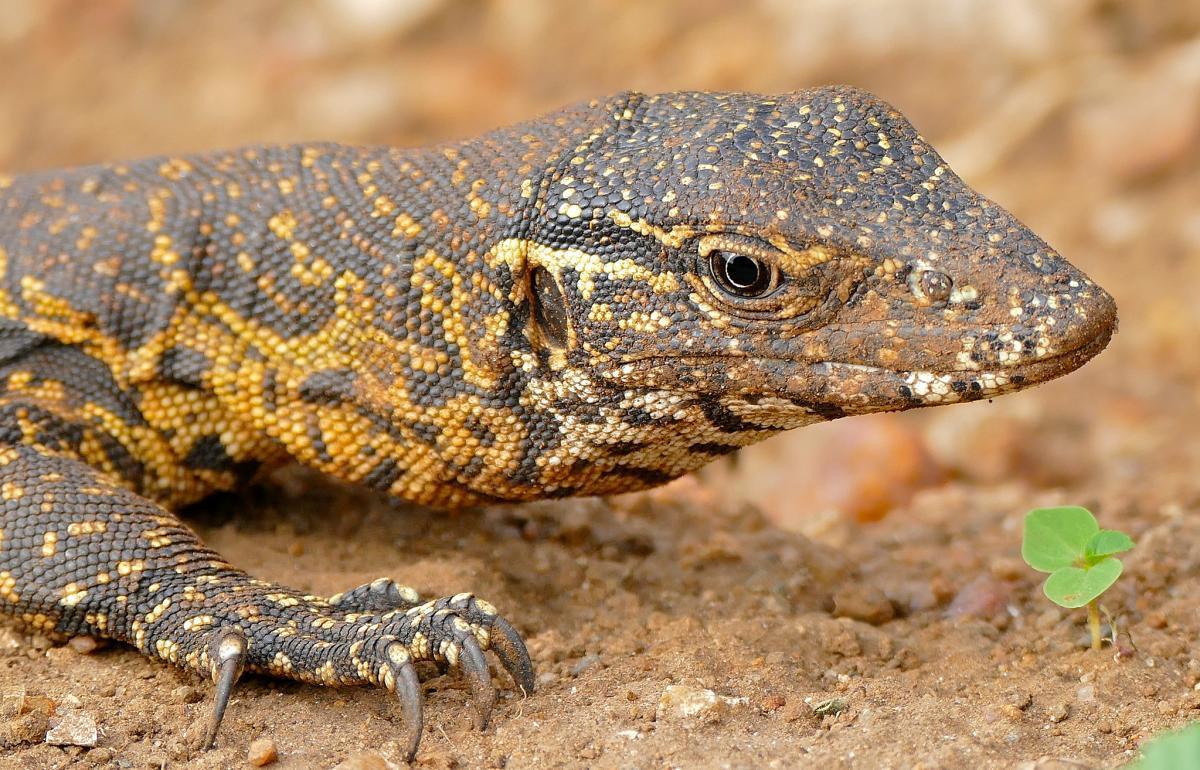

![40 Wild Animals in the UK [Wildlife in Britain]](https://www.kevmrc.com/wp-content/uploads/2022/10/40-wild-animals-in-the-uk.jpg)
![18 Wild Animals in Cambodia [Wildlife in Cambodia]](https://www.kevmrc.com/wp-content/uploads/2022/12/18-wild-animals-in-cambodia.jpg)
![18 Wild Animals in Kyrgyzstan [Wildlife in Kyrgyzstan]](https://www.kevmrc.com/wp-content/uploads/2022/12/18-wild-animals-in-kyrgyzstan.jpg)